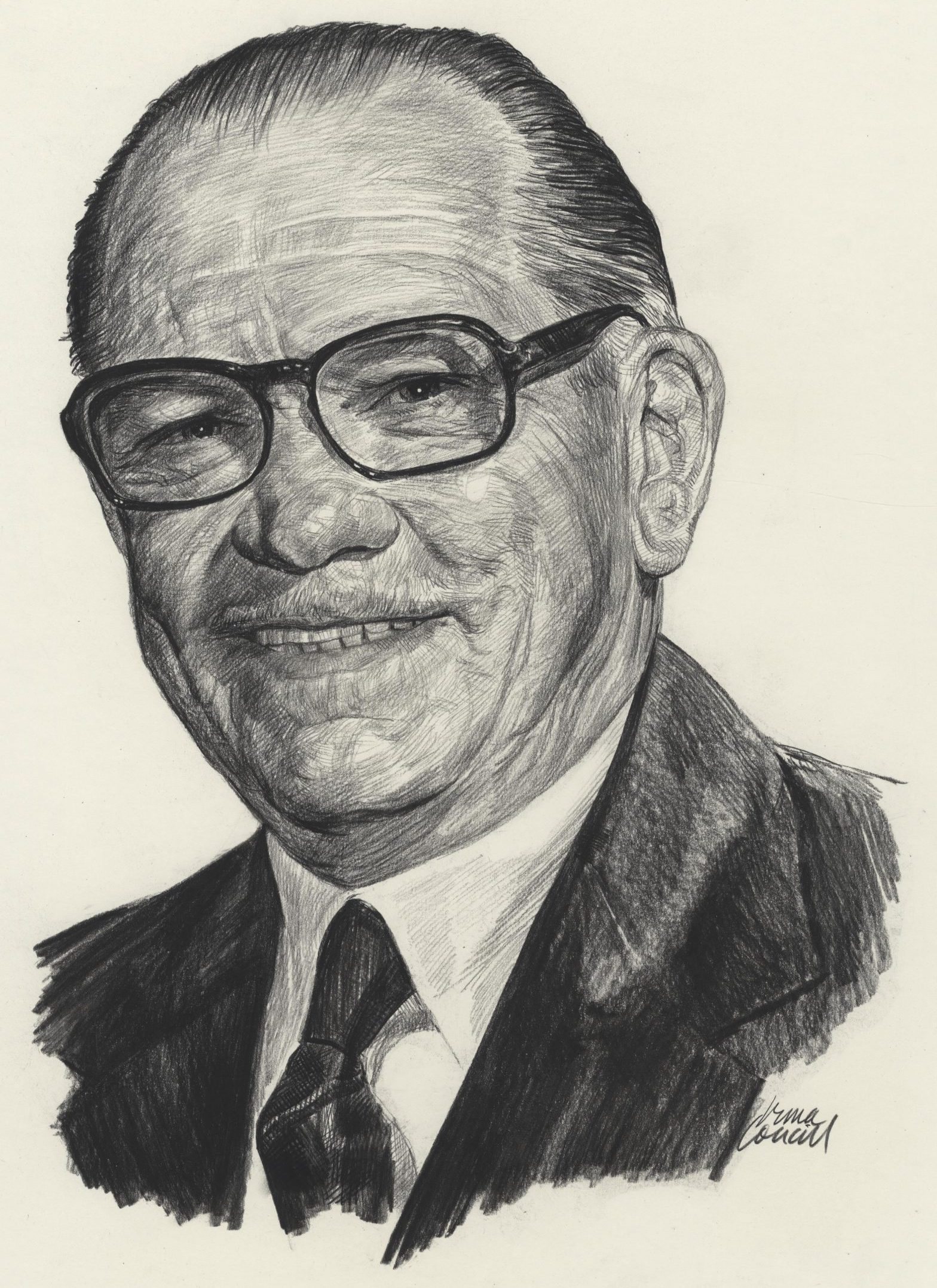Henry Winston Hayter

Nickname: Harry
Birth Date: October 29, 1900
Birth Place: Murray River, Prince Edward Island
Death Date: March 17, 1974
Year Inducted: 1974
The unselfish application of his airborne skills and his personal determination in the operation of his own aeroplane, despite adversity, over isolated areas for sustained periods of time in the service of others, have been of outstanding benefit to Canadian aviation
Education and Flight
Henry Winston (Harry) Hayter was born in Murray River, Prince Edward Island, on October 29, 1900. He joined the Canadian Light Infantry at age 15 and served with the 26th Battalion in France until October 9, 1918, when he was wounded. While recovering, he completed his secondary education by correspondence before attending three more years at veteran's college.
Hayter worked at Jacksonville, Florida, for the Buick Motor Company in 1924 as a special tool maker, and worked nights and weekends repairing small aircraft in exchange for flying lessons. In 1927 he moved to St. John, New Brunswick, where he completed his flight training and qualified for his Transport Pilot's Certificate and Air Engineer's Licence. During this time, Hayter flew every available aircraft type in the Maritimes as a barnstormer and charter pilot. He also flew as seal-spotter for the Boston fleet from a base in the Magdalen Islands (lies de la Madeleine, Quebec), near Prince Edward Island.
Work at Great Bear Lake
In 1932, having read about the uranium find at Great Bear Lake in the Northwest Territories, he flew his own aircraft from St. John across Canada to Fort McMurray, Alberta, where he organized his own air operation carrying passengers and freight northward into the sub-Arctic. He established a base at Cameron Bay on Great Bear Lake, and worked closely with Mackenzie Air Service in providing a life-line for the inhabitants of the area.
A Rescue Mission
He became nationally known in the fall of 1933 when a freighter and barge were caught in a severe storm on Great Bear Lake and the eleven men aboard were presumed lost. In preparation for freeze-up, Hayter was changing his plane from floats to skis at Cameron Bay, on the east end of the lake. During this period, neither floats nor skis are useful, since a trip which begins in the frozen north with skis will need floats to land on water further south. Hayter knew the dangers of flying his plane over the waters of Great Bear Lake, but he also knew that an air search must be started immediately in order to find and save the crew of those two vessels.
In one of the greatest mercy flights of the north, he began his search on October 29. With snow and ice carpeting the shoreline, Hayter flew his unheated, single-engined, ski-equipped aircraft over the freezing 12,000 square mile (31,200 sq. km) body of water, often at wave-top height, for 11 consecutive days until he finally located the nine Survivors and flew them to safety.
Fortunately, only one of the men, Vic Ingraham, desperately needed hospitalization for treatment of severely frozen limbs. Hayter had only one choice of hospital, Aklavik, where he could land with skis. On December 2nd, W.R. 'Wop' May flew to Aklavik to bring Ingraham to hospital in Edmonton, Alberta. Ingraham survived his ordeal, and returned to live in the north.
Recognition of Brave Work
In 1934 Hayter's extraordinary talents as a pilot and air engineer were recognized by W.L. Leigh Brintnell, owner of Mackenzie Air Service, who hired him as his company's General Manager. At the same time, Hayter was recognized for his exemplary service to the Northwest Territories by being appointed Commissioner for that area. Among many of his notable 'firsts' was piloting the inaugural passenger flight from Dawson City in the Yukon, to Edmonton, Alberta. He went on to become a near-legend to the adventurous trappers and prospectors whom he flew into remote regions, leaving them isolated for months at a time, but never failing to pick them up on the appointed day.
Mackenzie Air Service
He remained with Mackenzie Air Service until World War II was declared in 1939. The Royal Canadian Air Force commissioned him as a Flying Officer, but the government diverted his services almost immediately to organize and manage Aircraft Repair Limited in Edmonton. This job took him to one of the largest maintenance plants in Canada, working with W.L. Brintnell. It was important to the war effort that this plant be kept open to maintain military aircraft.
Accomplishments and Honours
In 1944 Hayter and M. 'Moss' Burbidge were invited to Miami, Florida, to work with Transportes Aereos Centro-Americanos, an airline operating out of Miami and flying throughout Central America. Hayter became Operations Manager of the airline, and organized the first routes across uninhabited jungle. He also organized the first airmail flights from all of the Central American countries to Miami. Soon after returning to Edmonton in 1945, he responded to a request from Aero Transportes in Mexico to set up an administration office for that company. He was Captain on that country's first transcontinental flight, from Tampico on the east coast to Mazatlan on the west.
Hayter retired from professional flying in 1950. During his career he logged more than 20,000 command hours in numerous aircraft, including the renowned Bernelli Flying Wing. He died on March 17, 1974, in Edmonton, Alberta.
Harry Hayter brought his wife with him in 1933 to establish their home at Cameron Bay, NWT. They learned soon after that she was only the fifth white woman to live in the Arctic up to that time.
Henry Winston (Harry) Hayter was inducted as a Member of Canada's Aviation Hall of Fame in 1974 at a ceremony held in Edmonton, Alberta.
To return to the Inductee Page, please click here.
